- Mass Spectrometry for Energy Transformation and Astrochemistry
- Extreme Ultraviolet Electronic Structure Characterization and Lithography
- Electronic Structure Characterization for Operando Micro/Nano Devices
- High-sensitive, Space-Resolved and Time-Resolved Electron Spin Dynamics
- In-situ/Operando Soft X-ray Spectroscopy and Scattering
- Soft X-ray Ptychographic Nanoscopy
- Resonant Coherent Scattering
- High Throughput In-situ/Operando Tender X-ray Spectroscopy
- Tender X-ray Spectromicroscopy and Ptychography
- Test Beamline
A-Branch: Astrochemistry
The Astrochemistry Endstation is capable of simulating interstellar environments under cryogenic ultra-high vacuum conditions. By combining high-performance synchrotron radiation and high-resolution mass spectrometry with true in-situ online ionization, it reduces ion transmission losses and enhances the detection capability for trace radicals and reaction intermediates. The system consists of a sample introduction system, a high-energy electron irradiation system, a reaction chamber, and a detection system. It can simulate interstellar conditions at ultra-high vacuum (10-8 Pa) and ultra-low temperatures (5 K), providing experimental support for astrochemical kinetics studies and opening new possibilities for exploring the origins of the universe and even life itself.
Experimental station layout
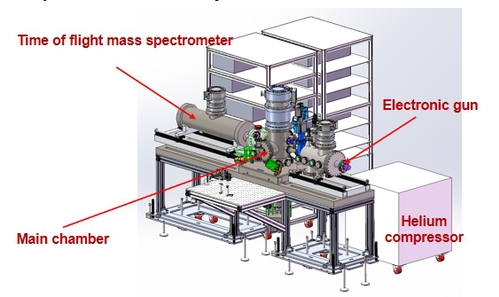
Key Performance
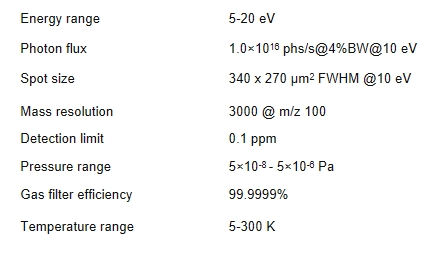
B-Branch: Combustion
Combustion Endstation is dedicated to investigating the combustion process, encompassing fuel pyrolysis, oxidation, and combustion reactions. The station employs vacuum ultraviolet (VUV) light with an energy range of 5 eV to 20 eV, which enables the ionization of nearly all combustion products. A novel gas filter system ensures the provision of high-purity VUV light. A custom-built time-of-flight mass spectrometer, offering a mass resolution of 3000 and a detection limit of 0.1 ppm, is used to analyze combustion reaction products. These include key intermediates such as radicals, hydroperoxides, and aromatics, as well as final combustion products. By tuning the VUV photon energy, photoionization efficiency spectra can be acquired, facilitating the identification of molecular structures—particularly distinguishing between isomers. The station is equipped with combustion reactors capable of operating across temperature ranges from 300 K to 2000 K and pressures from 0.001 atm to 10 atm.
Experimental station layout
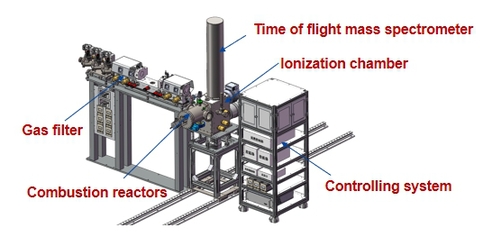
Key Performance
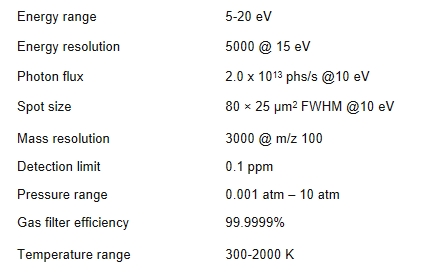
B-Branch: Catalysis
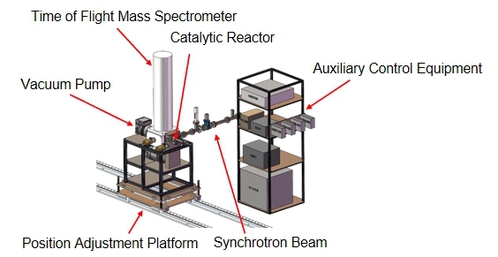
Key Performance
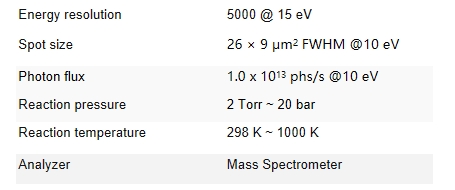
Overview
MB-ES3 is a catalysis endstation with the VUV beam energy ranging from 5 eV to 20 eV. Equipped with a high resolution time-of-flight mas spectrometer as detector, this endstation is designed to capture the fleeting intermediates during catalytic reactions.
I. Catalytic reactor
The catalytic reactor is designed to be coupled with PIMS to in situ capture the fleeting intermediates during catalytic reactions.
Thermal catalytic reactor: pressure up to 20 bar, temperature up to 1000 K;
Photocatalytic reactor
II. Photoionization mass spectrometer
Mass range: 2~300 amu;
Mass resolution: >5000@m/z 128;
Mass error: < 20 ppm;
Dynamic range: 5 orders of magnitude;
Limit of detection: ~ 0.1 ppm
III. Auxiliary Equipment
Mass flow controller;
Temperature controller;
Hydrogen generator;

